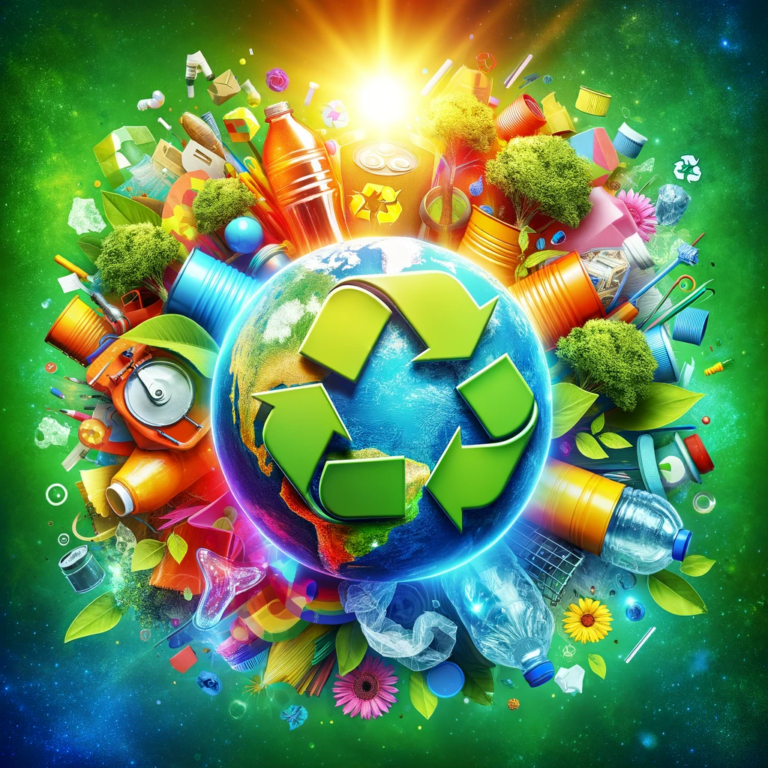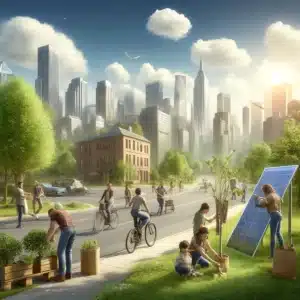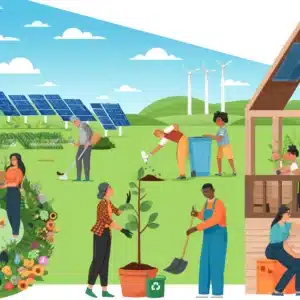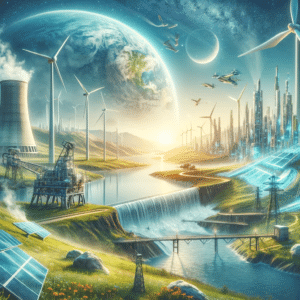
Why Recycle Is Important
The question, “Why is recycling important?”, isn’t just an environmental inquiry. It’s an exploration into our roles as stewards of Earth. Let’s venture deeper into
“If you want to change the world, start with yourself.” – Mohandas Gandhi
Home » Recycle


Recycling is a vital part of waste management that helps in reducing the impact of our daily waste on the environment. Recycling is a process that involves the collection, sorting, and processing of materials such as paper, glass, plastics, and metals to be used as raw materials for new products. In this article, we will explore the importance of recycling and how it can be an authentic way to protect our planet.
The Ultimate Guide to Recycling
Welcome to the comprehensive guide to understanding and mastering the art of recycling. This journey is crucial for our planet’s health and our sustainable future. So, let’s embark on this enlightening path together and explore the world of recycling in detail.

Introduction to Recycling
What is Recycling?
At its core, recycling is a process where waste materials are transformed into new products. This is done to prevent the waste of potentially useful materials, reduce the consumption of fresh raw materials, and minimize energy usage, air pollution (from incineration), and water pollution (from landfilling). By converting waste into reusable material, recycling serves as a key component of modern waste reduction, playing a significant role in the circular economy.
Why is Recycling Important?
Recycling is not just an eco-friendly gesture; it is a necessity for our planet. The importance of recycling stems from its ability to conserve natural resources, such as timber, water, and minerals. Every recycled item is a step toward preserving these resources for future generations. Furthermore, recycling reduces the need for extracting, refining, and processing raw materials, all of which create substantial air and water pollution. As consumers and inhabitants of this planet, our commitment to recycling can significantly mitigate global warming and reduce pollution.
The Recycling Process
Collection and Sorting
The recycling journey begins with collection and sorting. Communities have various systems for collecting recyclables, ranging from curbside collection to drop-off centers. Once collected, the recyclables are sorted by type (paper, plastics, metals, and glass) and cleanliness. Sorting is crucial as contaminants can reduce the quality of recycled products.
Cleaning and Shredding
After sorting, the materials undergo cleaning to remove any contamination. Following this, they are shredded into small pieces. This shredding process prepares the materials for the manufacturing of new recycled products, ensuring they are in the best condition to be transformed.
Repurposing Materials
The shredded pieces are then repurposed into new products. This can be anything from new paper and cardboard to metal cans and plastic containers. This stage completes the recycling loop, showcasing the transformation from waste to a valuable resource.
Types of Recyclable Materials
Paper and Cardboard
These are among the most commonly recycled materials. Recycling paper and cardboard save trees and water, significantly reducing our environmental footprint.
Plastics
Given the versatility and prevalence of plastics, recycling them can significantly reduce environmental pollution and conserve petroleum resources used in their production.
Metals
Recycling metals like aluminum and steel saves a considerable amount of energy and reduces mining activities, preserving natural resources.
Glass
Glass can be recycled endlessly without loss in quality or purity. Each time glass is recycled, it conserves raw materials and reduces energy consumption.
Benefits of Recycling
Environmental Benefits
Recycling conserves natural resources, reduces greenhouse gas emissions, and saves considerable amounts of energy. It also decreases the need for new landfills and incinerators.
Economic Advantages
Recycling is not just good for the planet; it’s also beneficial for the economy. It creates jobs in the recycling and manufacturing industries and, in many instances, is a more cost-effective waste management method than landfilling and incineration.
Social Impact
Recycling encourages a sustainable lifestyle and fosters a sense of community. When people engage in recycling, they contribute to the collective effort of preserving the environment for future generations.
Common Recycling Myths
Myth 1: Recycling Doesn’t Save Energy
On the contrary, recycling saves a significant amount of energy. For instance, recycling aluminum cans saves 95% of the energy required to make the same amount of aluminum from its virgin source.
Myth 2: Recycling is Costly
While there may be initial costs involved in setting up recycling programs, the long-term economic benefits, including job creation and material conservation, often outweigh these costs.
How to Start Recycling at Home
Identifying Recyclable Items
Familiarize yourself with what can and cannot be recycled in your area. Most communities provide guidelines on which materials are accepted for recycling.
Proper Separation Techniques
Learn how to separate your recyclables properly. Incorrect separation can contaminate the recycling stream, making the entire batch unusable.
Challenges and Solutions
Addressing Contamination
Contamination is a significant challenge in recycling. Educating the public about proper recycling practices is crucial to addressing this issue.
Improving Recycling Technologies
Investing in advanced recycling technologies can increase the efficiency and effectiveness of recycling processes.
The Future of Recycling
Innovations and Trends
The future of recycling is promising, with ongoing innovations in recycling technologies and an increasing global focus on sustainable practices.
Promoting Sustainable Practices
By promoting sustainability and responsible consumption, we can ensure the success and longevity of recycling initiatives worldwide.
Conclusion
Recap of Key Points
This guide has taken you through the essentials of recycling, from its definition and importance to the types of materials you can recycle and the benefits of doing so.
Call to Action
Now that you understand the significance of recycling, take the initiative to incorporate it into your daily life. Remember, your actions, no matter how small, can make a significant impact.
FAQs
What is the most important material to recycle?
While all materials are important to recycle, some, like aluminum and plastics, have a more significant environmental impact when recycled.
How does recycling benefit the economy?
Recycling creates jobs in the collection, processing, and manufacturing sectors, and it can save money in waste management.
Can I recycle electronics and batteries?
Yes, but they require special handling. Check with your local waste management services for guidelines.
How can I encourage my community to recycle more?
Educate others about the benefits of recycling, and organize local clean-up and recycling drives.
Are there any items that I should not recycle?
Yes, items like contaminated containers, certain plastics, and broken glass can’t be recycled. Always check with your local recycling program for specifics.

The question, “Why is recycling important?”, isn’t just an environmental inquiry. It’s an exploration into our roles as stewards of Earth. Let’s venture deeper into

Reduce, reuse, recycle – these three words are more than just a catchy slogan; they represent a way of life that is essential for our
Join our mindful email list and get only important updates

“Discover small yet powerful steps you can take for Climate Action Now. This blog explores impactful changes with significant benefits for the environment.”

“Explore how to make ethical, low-impact choices daily through our blog on Sustainable Strategies. Understand the benefits of eco-friendly living for a better future.”

Discover insights into the future of clean energy with ‘Renewable Revelations’. Delve into the potential, benefits, and innovation of sustainable power sources for a greener planet.
Take control of your impact today with our Carbon Footprint Calculator. Join the fight for a sustainable future and make a difference – one click at a time